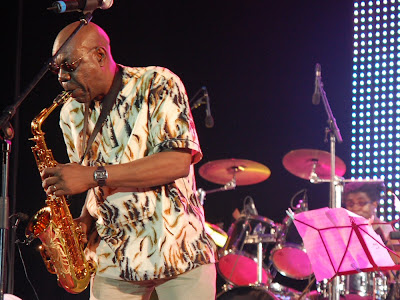 An Introduction
An Introduction
Semba can safely be considered the national genre of Angola. It is the musical predecessor of both the Brazilian samba and the slower kizomba/zouk. It also greatly influenced the fast paced kuduro beat, which will be explored in a later post. Semba is played in nearly all Angolan social gatherings, from parties to funerals to nightclubs. Singers normally incorporate a story within their lyrics, many times a humorous one. It is a true generational bridge, as both young and old dance it enthusiastically. Here are three tracks in the semba style - Kakixaka by Bangão is a party classic that always brings the roof down, while Estamos a Vir is a heartfelt ballad written by Puto Prata and Yuri da Cunha (the subject of a later post) in honor of the Angolan football team making it to the World Cup in 2006. The third one, Poema do Semba, by Paulo Flores, who will also be featured in this blog, is a beautiful description of what semba means to him.
Kakixaka
Estamos a Vir
Poema do Semba
O semba é a lingua oficial de Angola. É do semba que estilos como o samba brasileiro, a kizomba, e até o kuduro surgiram. O semba é tocado em practicamente todos os evento sociais em Angola, desde óbitos a festas a discotecas. O semba é uma forma de contar uma história, uma anedota, um lamento. O semba é uma ponte entre as gerações de ontem e as de hoje, uma forma de todos se entenderem. O respeito pelo semba é universal. Aqui estão trés homenagens à este estilo de música, trés sembas que ja nos fizeram vibrar em diferentes ocasiões. Kakixaka, do nosso conhecido Bangão, será sempre um clássico em qualquer festa. Durante o inesquecível Mundial de 2006, tinhamos o Estamos a Vir do Puto Prata e o Yuri da Cunha. E o terceiro, Poema do Semba, de Paulo Flroes, é a melhor explicação existente do que é que o semba realmente é. Uma explicação muito melhor que este post.
- Photo: Manu Dibango in Luanda, by Massalo



















No comments:
Post a Comment